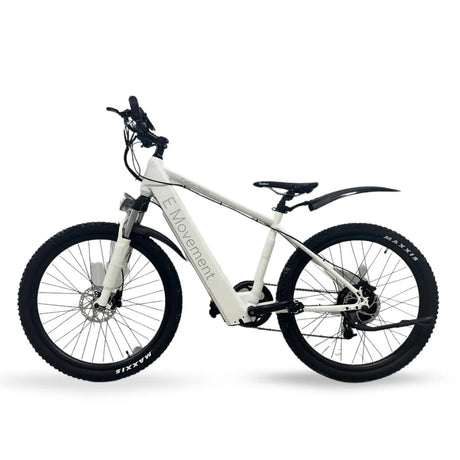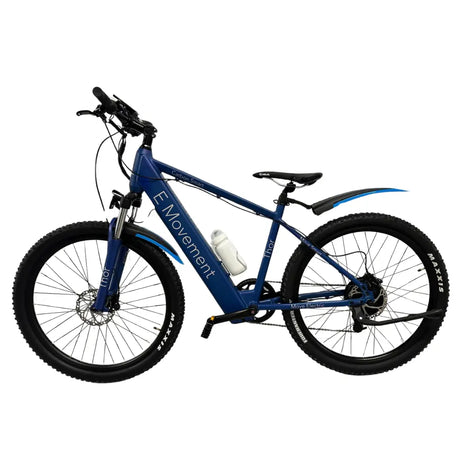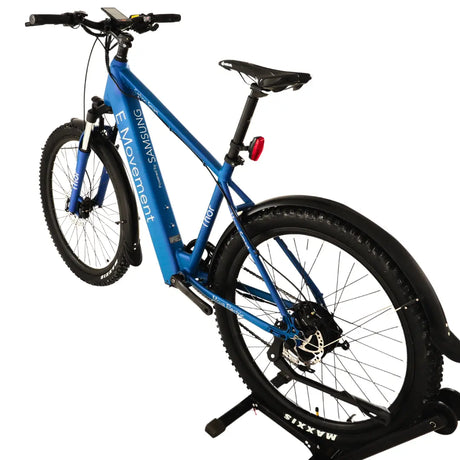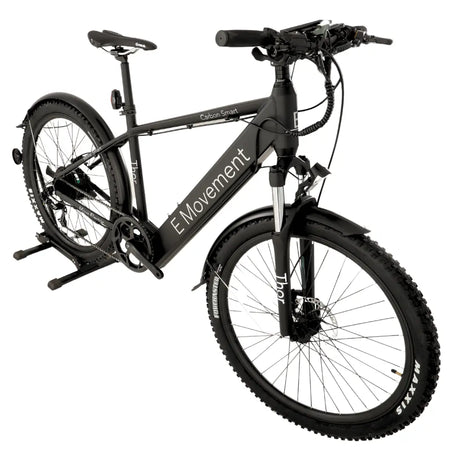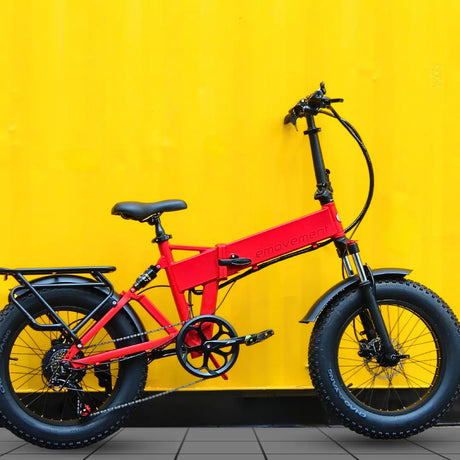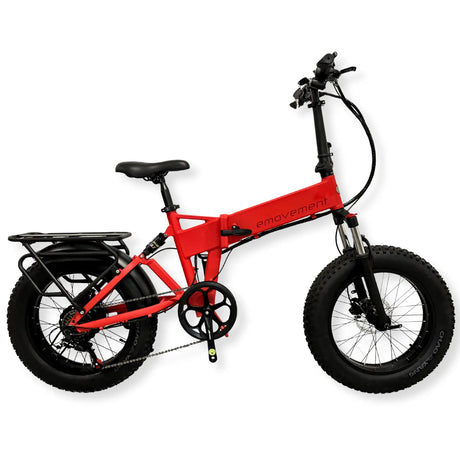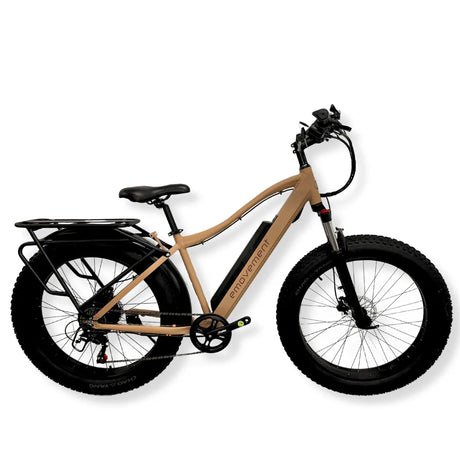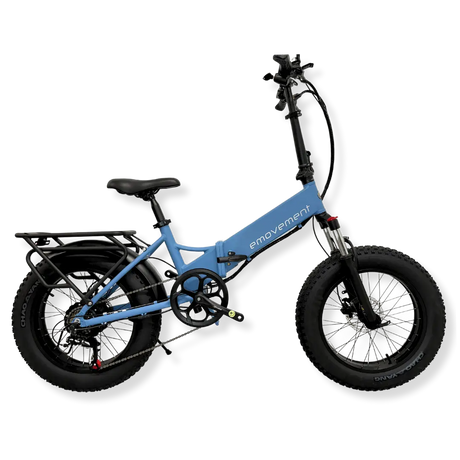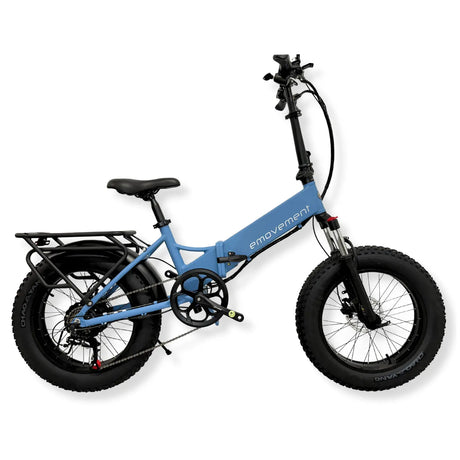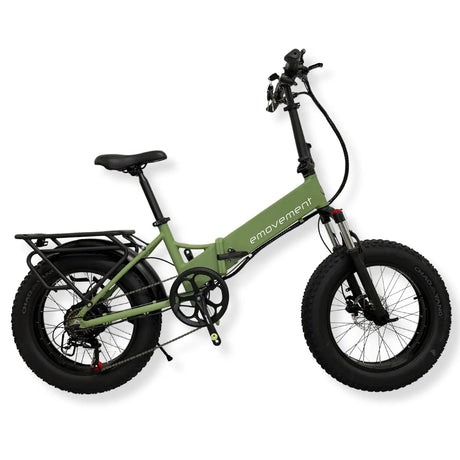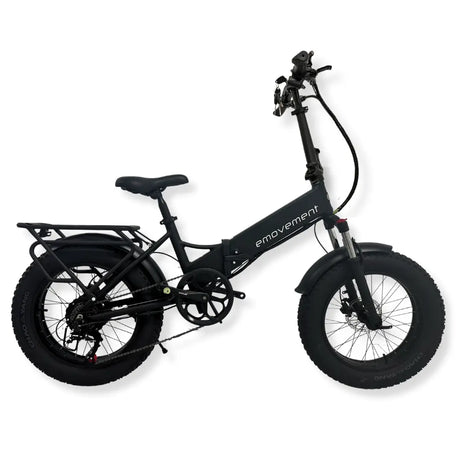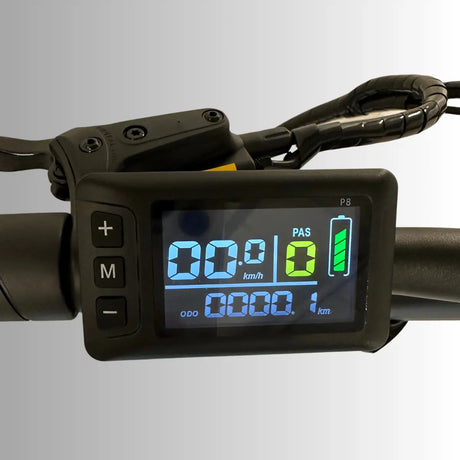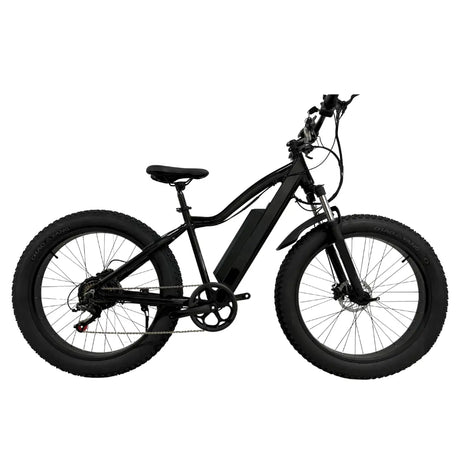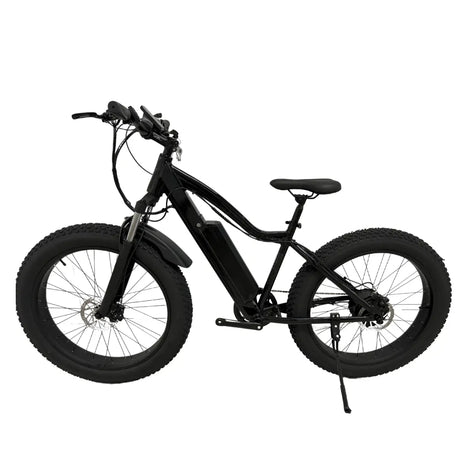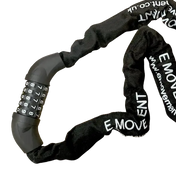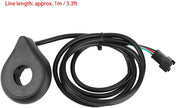E-bikes have taken the world by storm and today’s market offers various models, each designed for different needs and preferences. You’ll find accessible step-thru frames, lightweight foldable bicycles, rugged fat tyre versions, those with pedal-assist systems, and much more among the options. Understandably, it can be challenging to differentiate and understand their distinct features.
Consider, for example, pedal-assist models. These bikes are becoming increasingly popular, with their traditional appearance often disguising their electric capabilities. Keep reading as we explore what sets pedal-assist electric bikes apart from other types and whether you should invest in one.
What is a Pedal-Assist Electric Bicycle?
Pedal assist, commonly known as PAS, is a feature on e-bicycles that boosts your pedalling power. It's like riding a regular bike but with an extra boost when needed, making it easier to cover longer distances, climb hills, and tackle difficult terrains without getting tired.
By using an integrated system, the pedal assist feature detects pedalling activity and automatically activates the electric motor to add power. Most systems utilise either cadence sensors or torque sensors. Cadence sensors trigger the motor based on your pedalling speed, while torque sensors adjust the motor’s power in response to the force of your pedalling. Some high-end electric bikes incorporate both sensors to ensure a smoother, more adaptive ride.
You have to pedal to engage the motor for a pedal-assist bike; the system's sensors measure your pedalling speed and force, and adjust the motor output accordingly. Pedal assist e-bikes usually feature different levels of support, such as eco for minimal battery use and extended range to turbo for quick acceleration or maximum power on steep inclines.
Using a Pedal-Assist E-Bike
Let’s now consider how you can make the most of pedal assist when riding a pedelec:
- Start Pedalling: Simply begin pedalling like you would on a regular bike. The pedal assist system will detect your movement and start to help.
- Pick Your Preferred Assistance Level: Electric bikes offer various pedal assist levels, which you can adjust using a control panel on the handlebars. Opt for a higher setting if you need more power and a lower setting when you feel like a gentle boost is enough.
- Pedal Consistently: Maintain a smooth pace of pedalling for the best performance. There’s no need to pedal hard, as the system is designed to enhance your efforts.
- Use Gears and Brakes Normally: Pedal assist doesn’t affect the use of gears and breaks. You can shift them as you would on a non-electric bike.
- Check Your Battery: Keep an eye on your battery level to ensure you don’t run out of power, especially important on longer rides. Remember, using higher levels of assist consumes more battery.
- Walk-Assist Mode: Many electric bikes also include a walk-assist feature, which is helpful for pushing your bike up steep hills or navigating crowded spaces. To activate it, press the dedicated button on your control panel. The motor will then provide a gentle push, making it easier to ride your bike.
Who Should Use Pedal-Assist Bikes?
Since this type of e-bike provides versatile riding options, it is a top choice for many. A pedal-assist bike is a great option for daily commuters; they can travel to work without looking dishevelled or breaking a sweat because of the provided motor assistance. Additionally, those who frequently tackle rugged terrains or challenging hills will find that a pedelec helps boost confidence and productivity.
We particularly recommended these two-wheeled wonders for senior riders, as the pedal assist feature reduces physical strain and offers relief to the joints. For example, someone with an old knee injury can adjust the level of assistance they need on their pedelec to minimise discomfort and pain. Still, despite the ease provided by pedal assist, it’s essential to avoid cycling if you experience any persistent pain or discomfort in your joints.
Benefits of Pedal-Assist Electric Bikes
Here are a few reasons why you should invest in a pedal-assist e-bicycle:
1. Safety is Enhanced
With pedelecs, you can enjoy a smoother and more natural riding experience. The motor activates power assistance only when you pedal, resulting in seamless acceleration and deceleration. Consequently, you’re likely to be more connected to the vehicle itself and maintain an upright posture once you have your body engaged and influencing the speed at which you travel. This enables riders to react more readily to changes in their surroundings, such as speeding up, changing direction or stopping suddenly. A quick reaction time is crucial for your and other people’s safety on the road.
2. Overall Health is Improved
Pedal assist e-bikes require you to actively pedal if you want to receive assistance from the vehicle’s motor. Riders can indulge in a considerable amount of exercise depending on the type of terrain, gearing choices, and pedal assistance level. Maintaining or increasing your overall fitness level helps improve core engagement, cardiovascular health, muscle strength (especially in your legs!), and much more. On the other hand, electric bikes like throttled ones rely mostly on motor power and reduce the amount of physical activity carried out while cycling.
3. Wear and Tear is Reduced
The wear and tear on components such as the battery and motor is lower for pedal-assist bikes because of active pedalling for propulsion. Other types of e-bikes rely solely on the motor for this function, resulting in more damage to parts and higher maintenance costs.
4. Longer Rides
You can benefit from an extended range and healthier battery life if you choose a pedal-assist e-bike as your trusted companion. Using the preferred motor assistant level along with efficient and proper gearing enables riders to cover more ground on a single charge cycle, reducing draw on the battery. These bikes also tend to be lightweight for greater efficiency and easier handling.
5. Less Legal Restrictions
As pedal-assist electric bikes fall under the EAPC criteria in the UK, they are classified as standard bicycles and are subject to fewer regulatory restrictions. They can be ridden on multi-use and bike paths as well as areas where motorcycles or mopeds are prohibited. You won’t need to get a licence, pay tax, or get your pedelec insured.
Conclusion
By helping you with motor assistance whenever necessary, a pedal assist electric bike ensures that you never have to worry about elevation or distance ever again. There’s a reason the model is so popular among seniors, tourists, and commuters looking to cycle efficiently and stay active. Its best feature, perhaps, is the empowerment you feel when you get on the bike despite how tired you are or how long the journey ahead is. Customise the amount of manual effort you want to exert and revel in comfortable journeys wherever you go.
FAQS
1. Are pedal-assist electric bikes worth it?
Pedal-assist e-bikes are worth considering if you're looking for a more efficient way to travel longer distances or tackle challenging terrains without excessive fatigue. They combine the benefits of traditional cycling with an electric boost. This makes them ideal for commuting, leisure rides, or fitness.
2. How long does a pedal assist bike last?
The lifespan of a pedal-assist electric bicycle depends on the quality of its components and how well it's maintained. Generally, the battery, which is often the first component to require replacement, can last between 3 to 5 years or about 500 to 1,000 charge cycles. The motor and other electrical components may last much longer with proper care.
3. Does pedal assist use more battery?
Using pedal assist does consume more battery power compared to riding a bike manually without any electric assistance. The higher the level of assistance you choose, the more battery power it uses. However, because you're pedalling, it's more battery-efficient than using a throttle-only mode that relies solely on battery power.
4. How far can a pedal assist go?
A pedelec’s range can vary widely based on the battery capacity, the assistance level used, the terrain, and the rider's weight. On average, a fully charged mid-range electric bike can travel about 65 to 115 kilometres on a single charge when using pedal assist.
5. Which is better: throttle or pedal assist?
Whether throttle or pedal assist is better depends on your needs. Throttle allows you to ride without pedalling, and is great for those who want a more relaxed ride or need to navigate through stop-and-go traffic without tiring. In contrast, pedal assist provides a more natural riding experience, helps in conserving battery life, and is better for those looking to engage in physical activity. Both systems have their merits, and some bikes offer both to accommodate different preferences.


